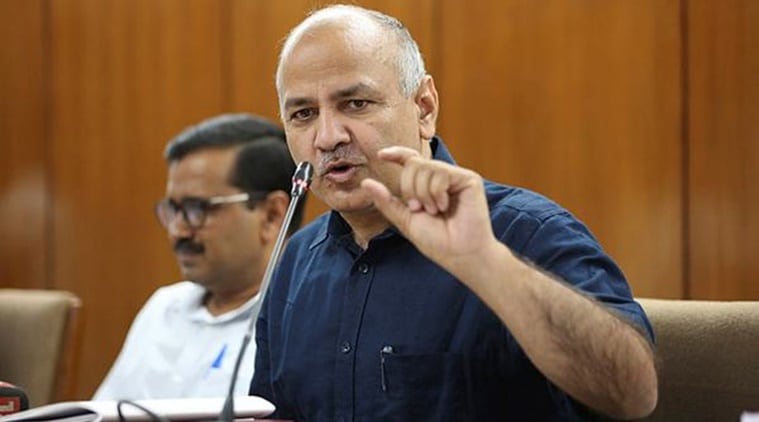 “The final number depends on student enrolment. The aim is to have a ratio of eight books per student,” he said. (File)
“The final number depends on student enrolment. The aim is to have a ratio of eight books per student,” he said. (File)
In an effort to get young children to read more, libraries were inaugurated in 100 Delhi government primary schools on Saturday. While these libraries were introduced in August in collaboration with non-profit organisation Room to Read, Education Minister Manish Sisodia formally inaugurated them Saturday. “Today, the number of libraries for children of government primary schools has gone up to 200. We are trying to inculcate reading habits in children, but here these small children are also managing the system themselves,” said Sisodia.
Room to Read country director Sourav Banerjee said 56,671 books have been provided across the 100 schools, where 27,672 children are enrolled. “We’ve roughly provided around 200 titles and 500 books per school. Over three years, the number of books in each library will increase to about 1,000. The final number depends on student enrolment. The aim is to have a ratio of eight books per student,” he said.
A hundred such libraries were introduced in the first phase of this programme last year, in which 2,28,120 books were provided to 28,999 students, officials said. “There are close to 450 Sarvodaya Vidyalayas in Delhi. The aim is to introduce these libraries in a phased manner for classes I to V in all of them,” said an official in the library branch of the Directorate of Education.
Students are trained by Room to Read to manage these libraries through formation of Children Library Management Committees (CLMC) in each school. Divyanka, a Class V student in Sarvodaya Kanya Vidyalaya II, Mandawali, is one of the 15 members of the CLMC at her school.
“When it is library time for my class, I make everyone stand in a line and arrange their shoes outside the library. Once they all sit at the tables, I call them in groups of three to select books to read,” she said. She opened the pages of a register to show how she maintains records of who borrowed which book, and when it was returned.
According to Banerjee, this system has been introduced as it was thought to be a sustainable model. “Apart from teaching children responsibility, it also reduces the burden on overworked teachers. Many times, if teachers are given this added responsibility, they might neglect it,” he said.
In the Mandawali school, each section has a 40-minute ‘library period’ every week. The teacher in charge of the library pointed to the coloured stickers on each book. “The books are assigned colours according to their grade of difficulty and children progress from one grade to another in their own time. The reading grades do not necessarily correspond to which class a student is studying in,” she said. This system has been introduced in all libraries.
“This is an attempt to go beyond just stocking schools with books, and we want to make these libraries active spaces. Children are made to do activities like group reading and making charts, where they draw and write about characters they like from books, so that a genuine interest and curiosity for reading is created in them,” said the official from DoE’s library branch.